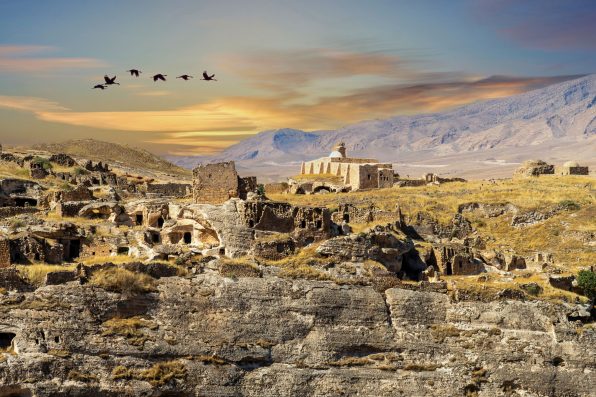A Prehistoric Human Skeleton Unburied Alongside Wild Animals In Turkey May Have Belonged To A Female Shaman Who Died About 12,000 Years Ago

In 2019, a prehistoric human skeleton was unburied along with the remains of wild animals. The burial may represent that of a female “shaman” who died around 12,000 years ago.
The remains were excavated at a Neolithic settlement called Çemka Höyük, which translates to “mound by the water.” The archaeological site is located near the Tigris River in Dargeçit, a municipality in southeastern Turkey.
The burial dates back to around 9300 B.C. during the Pre-Pottery Neolithic A period. It was discovered within the ruins of a roundhouse structure. Road construction between Çemka Höyük and the Tigris River caused partial damage to the southern portion of the burial, but most of it has remained intact.
A long, flat limestone block covered the grave, which was odd for a burial of that time period. Inside the grave, the individual was lying on their right side in a northwest-southeast orientation and faced the west.
An analysis of the skeleton revealed that the individual was a female who was between 25 and 30 years old when she died.
The woman was laid to rest with the remains of several animals. Researchers were able to identify the skull and bones of aurochs, an extinct cattle species.
In addition, there was a marten bone, a canid bone, a partridge bone, and the remains of a small ruminant, which is a grazing mammal such as a sheep or goat.
The characteristics of the burial suggest that the woman may have been a shaman or was buried by someone who practiced shamanism, a religion that involves the interaction with the spirit world through altered states of consciousness, like a trance.
“Considering the fact that the female individual and the animal bones were deposited together in one burial, we may assume some symbolic relations between the animals and the hunter-gatherer-fishers of Çemka Höyük, who had already embarked toward a sedentary life,” wrote the authors of the study.

Bulent – stock.adobe.com – illustrative purposes only
“It might be argued that the relationship was based on the early sedentary people’s new perspectives toward the animal world surrounding their environment in view of species to tame, herd, and manage.”
The burial is the only one of its kind at the site, indicating that the community members treated the woman differently.
She possibly had a special status. If she were indeed a shaman, she would have presented differently in appearance and behavior to those in her social group.
According to the study authors, shamans may have had a “handicap or visual markers that made them different.”
Their role as “a traveler between worlds” may have caused them to be lonely and socially marginalized. So, shamans in many ancient societies were often buried with different funeral ceremonies than ordinary society members.
The presence of the auroch’s skull in the woman’s grave could have been placed there as a guardian because the community wanted to ensure that the shaman did not return as an evil spirit. The limestone slab may have been used to prevent her from rising from the grave.
Sign up for Chip Chick’s newsletter and get stories like this delivered to your inbox.
More About:News